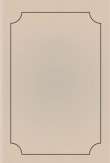أنت هنا
قراءة كتاب The Practice and Science of Drawing
تنويه: تعرض هنا نبذة من اول ١٠ صفحات فقط من الكتاب الالكتروني، لقراءة الكتاب كاملا اضغط على الزر “اشتر الآن"
artistic expression.
The position of art to-day is like that of a river where many tributaries meeting at one point, suddenly turn the steady flow to turbulence, the many streams jostling each other and the different currents pulling hither and thither. After a time these newly-met forces will adjust themselves to the altered condition, and a larger, finer stream be the result. Something analogous to this would seem to be happening in art at the present time, when all nations and all schools are acting and reacting upon each other, and art is losing its national characteristics. The hope of the future is that a larger and deeper art, answering to the altered conditions of humanity, will result.
There are those who would leave this scene of struggling influences and away up on some bare primitive mountain-top start a new stream, begin all over again. But however necessary it may be to give the primitive mountain waters that were the start of all the streams a more prominent place in the new flow onwards, it is unlikely that much can come of any attempt to leave the turbulent waters, go backwards, and start again; they can only flow onwards. To speak more plainly, the complexity of modern art influences may make it necessary to call attention to the primitive principles of expression that should never be lost sight of in any work, but hardly justifies the attitude of those anarchists in art who would flout the heritage of culture we possess and attempt a new start. Such attempts however when sincere are interesting and may be productive of some new vitality, adding to the weight of the main stream. But it must be along the main stream, along lines in harmony with tradition that the chief advance must be looked for.
Although it has been felt necessary to devote much space to an attempt to find principles that may be said to be at the basis of the art of all nations, the executive side of the question has not been neglected. And it is hoped that the logical method for the study of drawing from the two opposite points of view of line and mass here advocated may be useful, and help students to avoid some of the confusion that results from attempting simultaneously the study of these different qualities of form expression.
CONTENTS
| I. | INTRODUCTION |
| II. | DRAWING |
| III. | VISION |
| IV. | LINE DRAWING |
| V. | MASS DRAWING |
| VI. | THE ACADEMIC AND CONVENTIONAL |
| VII. | THE STUDY OF DRAWING |
| VIII. | LINE DRAWING: PRACTICAL |
| IX. | MASS DRAWING: PRACTICAL |
| X. | RHYTHM |
| XI. | RHYTHM: VARIETY OF LINE |
| XII. | RHYTHM: UNITY OF LINE |
| XIII. | RHYTHM: VARIETY OF MASS |
| XIV. | RHYTHM: UNITY OF MASS |
| XV. | RHYTHM: BALANCE |
| XVI. | RHYTHM: PROPORTION |
| XVII. | PORTRAIT DRAWING |
| XVIII. | THE VISUAL MEMORY |
| XIX. | PROCEDURE |
| XX. | MATERIALS |
| XXI. | CONCLUSION |
| APPENDIX | |
| INDEX |



